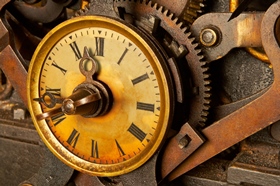 The always interesting Indiana Business Research Center at the Indiana University Kelley School of Business is celebrating its 90th anniversary this year. As a result, it is releasing information about how the state has changed over that time frame.
The always interesting Indiana Business Research Center at the Indiana University Kelley School of Business is celebrating its 90th anniversary this year. As a result, it is releasing information about how the state has changed over that time frame.
A recent release looks at population shifts from 1920 to 2010. The map on the IBRC site provides the visual as 17 counties (many on the western edge of the state) declined in population in that 90-year span; 15 counties experienced at least 200% growth. Here are the lists:
- Population decline: Benton, Warren, Fountain, Vermillion, Parke, Clay, Sullivan, Greene, Knox, Martin, Pike, Crawford, Tipton, Blackford, Jay, Randolph and Rush
- At least 200% growth: Lake, Porter, Elkhart, Allen, Tippecanoe, Hamilton, Hendricks, Hancock, Morgan, Johnson, Monroe, Bartholomew, Scott, Clark and Warrick
Marion, Lake, Allen and St. Joseph counties combined for 25% of the state’s population in 1920. That percentage increased to 36% in the 1960s and 1970s before declining to 31% in 2010.

 Per capita personal income is not created equally across all 92 Indiana counties. It never has been, but a look at the income impacts of the recession provides some interesting disparities.
Per capita personal income is not created equally across all 92 Indiana counties. It never has been, but a look at the income impacts of the recession provides some interesting disparities. On this St. Patrick’s Day, the Indiana Business Research Center offers a
On this St. Patrick’s Day, the Indiana Business Research Center offers a